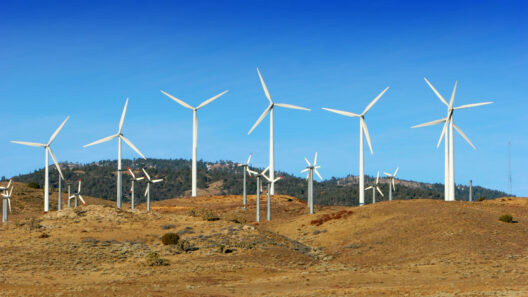Energy is a fundamental component of every facet of our existence, and its conservation is crucial in an era where climate change looms large. Have you ever pondered how total energy is conserved as heat? How does this seemingly invisible energy exchange occur? To explore this, we must delve into the intricate connections between energy forms, thermodynamics, and the environment.
The first principle we must understand is the law of conservation of energy, which asserts that energy cannot be created or destroyed but only transformed from one form to another. This concept is pivotal in the realm of thermodynamics, where we often examine how energy moves and changes, particularly in terms of heat. Heat energy, in physical terms, refers to the energy generated by the movement of particles within a substance. As these particles collide and interact, they produce a flow of energy that propagates as heat.
Within numerous systems—such as engines, refrigerators, and even our environment—heat transfer occurs continuously. This transfer can happen through three primary mechanisms: conduction, convection, and radiation. Conduction is the direct transfer of heat through contact between materials. Imagine a metal spoon placed in a hot cup of coffee; the heat from the coffee warms the spoon through conduction. This example elucidates how energy is exchanged directly at a molecular level.
Next comes convection, a process where heat transfer occurs through the movement of fluids—liquids or gases. When you boil water, the heat moves from the stove to the pot, heating the water at the bottom first. As the water heats, it expands and rises, causing cooler water to sink and complete a convective cycle. This phenomenon is not only critical in cooking but also plays a vital role in meteorological systems and ocean currents, impacting climate on a global scale.
The third mode of heat transfer, radiation, is particularly fascinating as it does not require a medium. Heat can be transferred through electromagnetic waves. The warmth we feel from the sun is a perfect example; the sun emits energy in the form of radiation, traversing the vacuum of space to reach Earth. Understanding these modes of heat transfer allows us to recognize how energy exchanges influence our environment.
As energy transforms into heat, it raises another intriguing question: What happens to that heat energy once it’s generated? This leads us to examine energy efficiency within systems. Heat is often regarded as ‘waste energy’ because it dissipates into the environment during energy transformation. Traditional systems, such as fossil fuel power plants, often release tremendous amounts of heat into the atmosphere. This heat loss contributes to inefficiency and highlights the urgent need for advancements in energy technology.
However, this challenge presents an opportunity for innovation. What if we could harness this dissipated heat? This is where the concept of energy recovery comes into play. Technologies such as heat exchangers allow systems to capture and reuse waste heat, enhancing efficiency and reducing overall energy consumption. Understanding this potential serves as a catalyst for further exploration into sustainable practices and smarter energy usage.
Consider the implications of maximizing heat recovery: If industries began to effectively utilize waste heat, the repercussions could extend far beyond increased profits. Energy efficiency not only reduces operational costs but also minimizes carbon emissions—a critical goal in combatting climate change. By promoting policies that incentivize energy recovery technologies, governments can lead the way toward a more sustainable future.
Moreover, the conservation of energy as heat has profound implications for residential energy consumption. Home heating systems, for instance, lose considerable energy as heat escapes through walls, roofs, and windows. Implementing better insulation and energy-efficient windows can retain heat within our homes, making them more eco-friendly. A small question arises: Are we collectively doing enough to insulate our living spaces? Are we vigilant about optimizing our home energy performance?
Innovations in building materials, such as phase change materials (PCMs), present significant enhancements to thermal performance. These materials can absorb heat when the temperature rises and release it when it cools, effectively maintaining a stable indoor climate. The integration of such technologies is instrumental in achieving optimal energy conservation.
As consumers, our choices greatly influence energy conservation efforts. Embracing renewable energy sources, such as solar or wind energy, enables us to shift from traditional fossil fuels, which inherently waste large amounts of heat energy. Additionally, adopting energy-efficient appliances can have a swift impact on individual energy use. Are we mindful of our daily consumption habits and their broader repercussions on our environment?
Moreover, education plays a pivotal role in these efforts. By understanding how energy conservation works and its relevance in our daily lives, we empower individuals to make informed decisions. This creates a ripple effect, fostering a culture of environmental stewardship. Universities and organizations can lead initiatives to provide essential knowledge about energy conservation technologies and practices, engaging and inspiring the next generation of thinkers.
Ultimately, the invisible exchange of energy as heat is a fundamental aspect of our ecosystem. The transformations and transfers of energy play a crucial role in climate dynamics, industrial processes, and our everyday lives. By recognizing the significance of this energy conservation and its potential role in mitigating climate change, we can turn challenges into opportunities for innovation and sustainability.
In conclusion, energy conservation as heat is not merely a scientific principle; it is a clarion call to action. We must collectively strive to harness the energy cascading around us, transforming waste into efficiency, and acting as responsible stewards of our planet. How will you contribute to this essential energy conservation journey?







